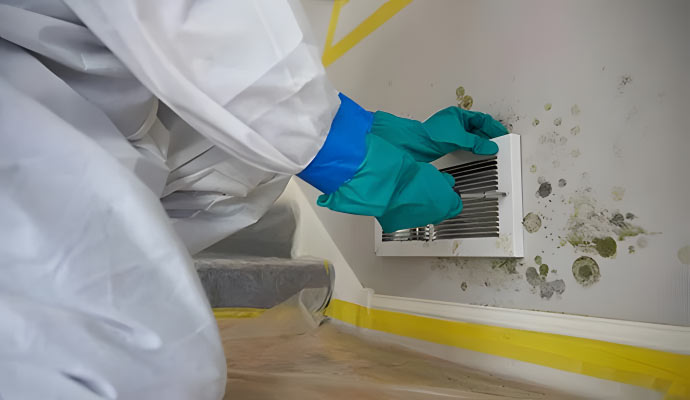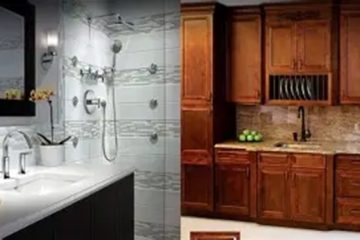Safeguarding Homes and Health: A Deep Look at Mold Removal in Montgomery

Mold is one of those household issues that often hides in plain sight until it becomes a serious concern. For homeowners in Montgomery, the humid climate can make conditions ideal for mold growth, especially in basements, bathrooms, and poorly ventilated spaces. Understanding the ins and outs of mold removal in Montgomery is essential not just for the integrity of your home, but also for the health and well-being of everyone inside it.
Understanding the Risks of Indoor Mold Growth
Mold is a naturally occurring fungus that thrives in damp environments. While a small amount of mold spores exists almost everywhere, problems begin when these spores find the right conditions—moisture, warmth, and organic material—to multiply. The result can be an unsightly, musty-smelling infestation that does more than affect your home’s appearance. Mold can damage wood, drywall, insulation, and carpet, eating away at your property’s structure without immediate detection.
The risks extend beyond property damage. Mold exposure has been linked to respiratory problems, especially for those with allergies, asthma, or compromised immune systems. Even in healthy individuals, mold spores can cause irritation of the eyes, throat, and lungs. In Montgomery, where seasonal humidity levels often rise, mold can spread quickly if not addressed. Mold removal in Montgomery is about more than cleaning up spots on walls—it’s about eliminating the root of the issue to protect your home and the people who live in it.
The Importance of Professional Mold Remediation
Many homeowners initially attempt to tackle mold problems with store-bought cleaners or DIY solutions. While these efforts might work temporarily for surface-level mold, they rarely reach the underlying cause. Mold often grows behind walls, under floors, and in HVAC systems, making professional intervention crucial.
Professionals trained in mold removal in Montgomery use advanced tools to detect the full scope of contamination. Moisture meters, infrared cameras, and air sampling devices help identify hidden mold sources that could otherwise go untreated. More importantly, remediation teams follow established protocols that prevent cross-contamination and ensure spores aren’t spread to unaffected areas of the home.
Another key element of professional service is containment. Technicians often isolate affected zones using plastic sheeting and negative air pressure machines to prevent mold from traveling to other parts of the house. Then comes the physical removal of affected materials such as drywall or carpet, along with specialized HEPA-filtered vacuuming and antimicrobial treatments. This level of thoroughness sets mold removal in Montgomery apart from general cleaning or damage control.
Preventing Future Mold Issues in Montgomery Homes
Once mold has been removed, it’s important to focus on preventing a recurrence. Montgomery’s climate requires extra vigilance because high humidity and periodic flooding make local homes particularly susceptible. Prevention is not about relying on a one-time cleanup but rather about adjusting the home environment to make it inhospitable to mold growth.
Proper ventilation plays a major role. Kitchens, bathrooms, laundry rooms, and attics should be equipped with exhaust fans that vent outside, not into the attic or another part of the house. Dehumidifiers can also help in spaces that consistently feel damp, such as basements or closed-off rooms. Keeping indoor humidity levels below 50% is a good general goal.
Another step in long-term mold control is managing water intrusion. Roof leaks, poor drainage, and even small plumbing issues can quickly create the kind of moisture mold needs to thrive. Ensuring that gutters are clear and functioning, grading your yard to direct water away from the foundation, and regularly inspecting plumbing are all parts of a larger strategy. When issues arise, prompt attention can mean the difference between a minor repair and a major mold infestation. Hiring a service that specializes in mold removal in Montgomery can also include consultation on how to reduce your risk going forward.
Signs You Might Need Mold Removal
It’s not always obvious when mold is present. Visual clues like black, green, or white fuzzy spots are obvious, but other indicators are more subtle. A persistent musty odor is often the first sign homeowners notice, especially in basements or closed-in rooms. Allergic reactions, like sneezing, coughing, or eye irritation that improve when you leave the house, may also point to an indoor mold issue.
Discoloration on walls or ceilings, especially following a leak, can indicate water damage that could be harboring mold. In some cases, even newly installed materials can become a breeding ground if humidity isn’t controlled. That’s why mold removal in Montgomery is often a proactive step rather than a reactive one. Getting ahead of the problem can prevent major repairs and health complications down the line.
Whether you’re dealing with mold in a single room or suspect a deeper issue, it’s wise to seek professional evaluation. Even when the affected area seems small, hidden mold can be extensive, particularly in homes with prior water damage. Trained technicians can determine the full extent of the issue and develop a plan tailored to your home’s unique conditions.
Why Mold Removal in Montgomery Shouldn’t Wait
Delaying action when mold is detected can lead to escalating problems. Spores reproduce rapidly, and even a small patch of mold can grow exponentially in just a few days under the right conditions. More than that, mold damage is not always covered by homeowners insurance—especially if the insurer deems the issue preventable. That makes timely intervention not only a health necessity but also a financial one.
Hiring a local company with experience in mold removal in Montgomery means tapping into professionals who understand the specific environmental challenges of the region. From frequent summer storms to periods of heavy humidity, Montgomery homes require a tailored approach to remediation and prevention. Local companies also have a better sense of building codes, climate conditions, and the common construction materials used in area homes—all of which can affect how mold is treated and managed.
If your home has recently experienced water damage, has a persistent odor, or contains discolored areas that won’t go away, it’s wise to explore professional mold inspection and remediation services. Quick action today can save you from expensive structural repairs and long-term health concerns.














